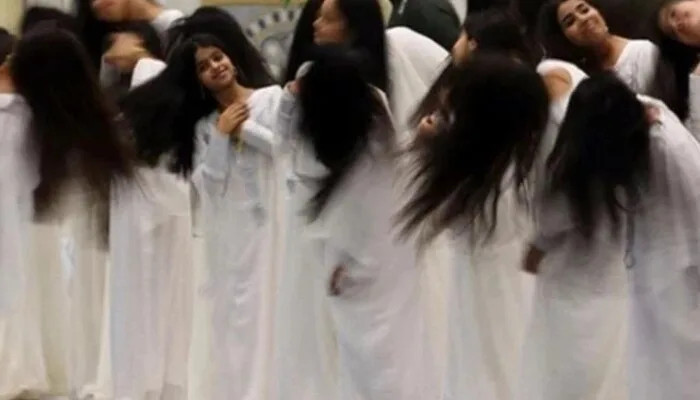A traditional Emirati performance called Al-Ayyalah has captured global attention after it featured prominently during US President Donald Trump’s recent visit to the United Arab Emirates. The ceremony, held at Qasr Al Watan in Abu Dhabi, showcased women in flowing white robes swaying their long hair to rhythmic drumbeats. The visually striking performance quickly spread on social media, sparking widespread curiosity about its origins and meaning.
Symbol of Unity and Celebration
Al-Ayyalah is a cultural heritage dance deeply rooted in Emirati and Omani traditions. Often performed at weddings, festivals, and national events, it symbolises unity and strength, particularly in times of war. The dance is more than a visual display—it is a powerful enactment of solidarity within Gulf Arab culture.
Read: Trump Applauds ‘Incredible Culture’ During Visit to UAE
People in Harmony
The performance typically includes men standing in two rows, moving in synchronised motions while holding thin bamboo canes. Women, often in matching attire, dance in formation alongside the men, tossing their hair to the rhythm of traditional drums and chants. This combination of movement, sound, and symbolism creates a compelling cultural narrative.
Global Recognition
In 2014, UNESCO acknowledged Al-Ayyalah as part of the Intangible Cultural Heritage of Humanity. This designation not only honors the dance’s cultural significance but also ensures efforts toward its preservation and continued practice for future generations.
Renewed Global Curiosity
The revival of interest in Al-Ayyalah, following Trump’s official reception, highlights how traditional arts can captivate international audiences when presented on global platforms. Many viewers unfamiliar with Gulf traditions are now seeking to learn more about this ceremonial art form, reflecting the growing appeal of regional heritage in a rapidly globalising world.
Follow us on Google News, Instagram, YouTube, Facebook,Whats App, and TikTok for latest updates
